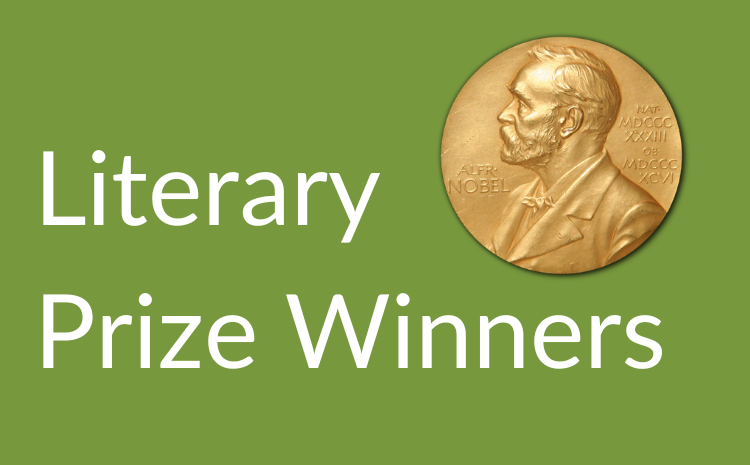Books to Consider
-

Everything Is Tuberculosis
Tuberculosis has been entwined with humanity for millennia. Once romanticized as a malady of poets, today tuberculosis is seen as a disease of poverty that walks the trails of injustice and inequity we blazed for it.
In 2019, author John Green met Henry Reider, a young tuberculosis patient at Lakka Government Hospital in Sierra Leone. John became fast friends with Henry, a boy with spindly legs and a big, goofy smile. In the years since that first visit to Lakka, Green has become a vocal advocate for increased access to treatment and wider awareness of the healthcare inequities that allow this curable, preventable infectious disease to also be the deadliest, killing over a million people every year.
In Everything Is Tuberculosis, John tells Henry’s story, woven through with the scientific and social histories of how tuberculosis has shaped our world—and how our choices will shape the future of tuberculosis. -

Katabasis (Deluxe Limited Edition)
Dante's Inferno meets Susanna Clarke's Piranesi in this all-new dark academia fantasy from R. F. Kuang, the #1 New York Times bestselling author of Babel and Yellowface, in which two graduate students must put aside their rivalry and journey to Hell to save their professor's soul--perhaps at the cost of their own.
Katabasis, noun, Ancient Greek:
The story of a hero's descent to the underworld
Alice Law has only ever had one goal: to become one of the brightest minds in the field of Magick. She has sacrificed everything to make that a reality: her pride, her health, her love life, and most definitely her sanity. All to work with Professor Jacob Grimes at Cambridge, the greatest magician in the world.
That is, until he dies in a magical accident that could possibly be her fault.
Grimes is now in Hell, and she's going in after him. Because his recommendation could hold her very future in his now incorporeal hands and even death is not going to stop the pursuit of her dreams....
Nor will the fact that her rival, Peter Murdoch, has come to the very same conclusion.
With nothing but the tales of Orpheus and Dante to guide them, enough chalk to draw the Pentagrams necessary for their spells, and the burning desire to make all the academic trauma mean anything, they set off across Hell to save a man they don't even like.
But Hell is not like the storybooks say, Magick isn't always the answer, and there's something in Alice and Peter's past that could forge them into the perfect allies...or lead to their doom.
-

The Unmaking of June Farrow
In the small mountain town of Jasper, North Carolina, June Farrow is waiting for fate to find her. The Farrow women are known for their thriving flower farm—and the mysterious curse that has plagued their family line. The whole town remembers the madness that led to Susanna Farrow’s disappearance, leaving June to be raised by her grandmother and haunted by rumors.
It’s been a year since June started seeing and hearing things that weren’t there. Faint wind chimes, a voice calling her name, and a mysterious door appearing out of nowhere—the signs of what June always knew was coming. But June is determined to end the curse once and for all, even if she must sacrifice finding love and having a family of her own.
After her grandmother’s death, June discovers a series of cryptic clues regarding her mother’s decades-old disappearance, except they only lead to more questions. But could the door she once assumed was a hallucination be the answer she’s been searching for? The next time it appears, June realizes she can touch it and walk past the threshold. And when she does, she embarks on a journey that will not only change both the past and the future, but also uncover the lingering mysteries of her small town and entangle her heart in an epic star-crossed love.
With The Unmaking of June Farrow, Adrienne Young delivers a brilliant novel of romance, mystery, and a touch of the impossible—a story you will never forget. -

Is a River Alive?
Hailed in the New York Times as "a naturalist who can unfurl a sentence with the breathless ease of a master angler," Robert Macfarlane brings his glittering style to a profound work of travel writing, reportage, and natural history. Is a River Alive? is a joyful, mind-expanding exploration of an ancient, urgent idea: that rivers are living beings who should be recognized as such in imagination and law.
Macfarlane takes readers on three unforgettable journeys teeming with extraordinary people, stories, and places: to the miraculous cloud-forests and mountain streams of Ecuador, to the wounded creeks and lagoons of India, and to the spectacular wild rivers of Canada--imperiled respectively by mining, pollution, and dams. Braiding these journeys is the life story of the fragile chalk stream a mile from Macfarlane's house, a stream who flows through his own years and days.
Powered by dazzling prose and lit throughout by other minds and voices, Is a River Alive? will open hearts, challenge perspectives, and remind us that our fate flows with that of rivers--and always has.
-

All Systems Red
A murderous android discovers itself in All Systems Red, a tense science fiction adventure by Martha Wells that interrogates the roots of consciousness through Artificial Intelligence.
"As a heartless killing machine, I was a complete failure."
In a corporate-dominated spacefaring future, planetary missions must be approved and supplied by the Company. Exploratory teams are accompanied by Company-supplied security androids, for their own safety.
But in a society where contracts are awarded to the lowest bidder, safety isn’t a primary concern.
On a distant planet, a team of scientists are conducting surface tests, shadowed by their Company-supplied ‘droid — a self-aware SecUnit that has hacked its own governor module, and refers to itself (though never out loud) as “Murderbot.” Scornful of humans, all it really wants is to be left alone long enough to figure out who it is.
But when a neighboring mission goes dark, it's up to the scientists and their Murderbot to get to the truth. -

Spent
In Alison Bechdel's hilariously skewering and gloriously cast new comic novel confection, a cartoonist named Alison Bechdel, running a pygmy goat sanctuary in Vermont, is existentially irked by a climate-challenged world and a citizenry on the brink of civil war. She wonders: Can she pull humanity out of its death spiral by writing a scathingly self-critical memoir about her own greed and privilege?
Meanwhile, Alison's first graphic memoir about growing up with her father, a taxidermist who specialized in replicas of Victorian animal displays, has been adapted into a highly successful TV series. It's a phenomenon that makes Alison, formerly on the cultural margins, the envy of her friend group (recognizable as characters, now middle-aged and living communally in Vermont, from Bechdel's beloved comic strip Dykes to Watch Out For).
As the TV show Death and Taxidermy racks up Emmy after Emmy--and when Alison's Pauline Bunyanesque partner Holly posts an instructional wood-chopping video that goes viral--Alison's own envy spirals. Why couldn't she be the writer for a critically lauded and wildly popular reality TV show...like Queer Eye...showing people how to free themselves from consumer capitalism and live a more ethical life?!!
Spent's rollicking and masterful denouement--making the case for seizing what's true about life in the world at this moment, before it's too late--once again proves that "nobody does it better" (New York Times Book Review) than the real Alison Bechdel.
-

The Library at Mount Char
A library with the secrets to the universe.
A woman too busy to notice her heart slipping away.
Carolyn's not so different from the other people around her. She likes guacamole and cigarettes and steak. She knows how to use a phone. Clothes are a bit tricky, but everyone says nice things about her outfit with the Christmas sweater over the gold bicycle shorts.
After all, she was a normal American herself once.
That was a long time ago, of course. Before her parents died. Before she and the others were taken in by the man they called Father.
In the years since then, Carolyn hasn't had a chance to get out much. Instead, she and her adopted siblings have been raised according to Father's ancient customs. They've studied the books in his Library and learned some of the secrets of his power. And sometimes, they've wondered if their cruel tutor might secretly be God.
Now, Father is missing—perhaps even dead—and the Library that holds his secrets stands unguarded. And with it, control over all of creation.
As Carolyn gathers the tools she needs for the battle to come, fierce competitors for this prize align against her, all of them with powers that far exceed her own.
But Carolyn has accounted for this.
And Carolyn has a plan.
The only trouble is that in the war to make a new God, she's forgotten to protect the things that make her human.
Populated by an unforgettable cast of characters and propelled by a plot that will shock you again and again, The Library at Mount Char is at once horrifying and hilarious, mind-blowingly alien and heartbreakingly human, sweepingly visionary and nail-bitingly thrilling—and signals the arrival of a major new voice in fantasy. -
Sister Deborah
When time-worn ancestral remedies fail to heal young Ikirezi’s maladies, she’s rushed to the Rwandan hillsides. From her termite perch under the coral tree, health blooms under Sister Deborah’s hands. Women bear their breasts to the rising sun as men under thatched roofs stand, “stunned and impotent before this female fury.”
Now grown, Ikirezi unearths the truth of Sister Deborah’s passage from America to 1930s Rwanda and the mystery surrounding her sudden departure. In colonial records, Sister Deborah is a “pathogen,” an “incident.” Who is the keeper of truth, Ikirezi impels us to ask, Who stands at the threshold of memory? Did we dance? Did she heal? Did we look to the sky with wonder? Ikirezi writes on, pulling Sister Deborah out from the archive, inscribing her with breath.
A beautiful novel that works in the slippages of history, Sister Deborah at its core is a story of what happens when women — black women and girls — seek the truth by any means. -

Hungerstone
It's the height of the industrial revolution and ten years into Lenore's marriage to steel magnate Henry, their relationship has soured. When Henry's ambitions take them from London to the remote British moorlands to host a hunting party, a shocking carriage accident brings the mysterious Carmilla into their lives. Carmilla, who is weak and pale during the day but vibrant at night. Carmilla, who stirs up something deep within Lenore. And before long, girls from the local villages fall sick, consumed by a terrible hunger . . .
As the day of the hunt draws closer, Lenore begins to unravel, questioning the role she has been playing all these years. Torn between regaining her husband's affection and the cravings Carmilla has awakened, soon Lenore will uncover a darkness in her household that will place her at terrible risk. -

The Bloody Chamber
Angela Carter was a storytelling sorceress, the literary godmother of Neil Gaiman, David Mitchell, Audrey Niffenegger, J. K. Rowling, Kelly Link, and other contemporary masters of supernatural fiction. In her masterpiece, The Bloody Chamber—which includes the story that is the basis of Neil Jordan’s 1984 movie The Company of Wolves—she spins subversively dark and sensual versions of familiar fairy tales and legends like “Little Red Riding Hood,” “Bluebeard,” “Puss in Boots,” and “Beauty and the Beast,” giving them exhilarating new life in a style steeped in the romantic trappings of the gothic tradition.

